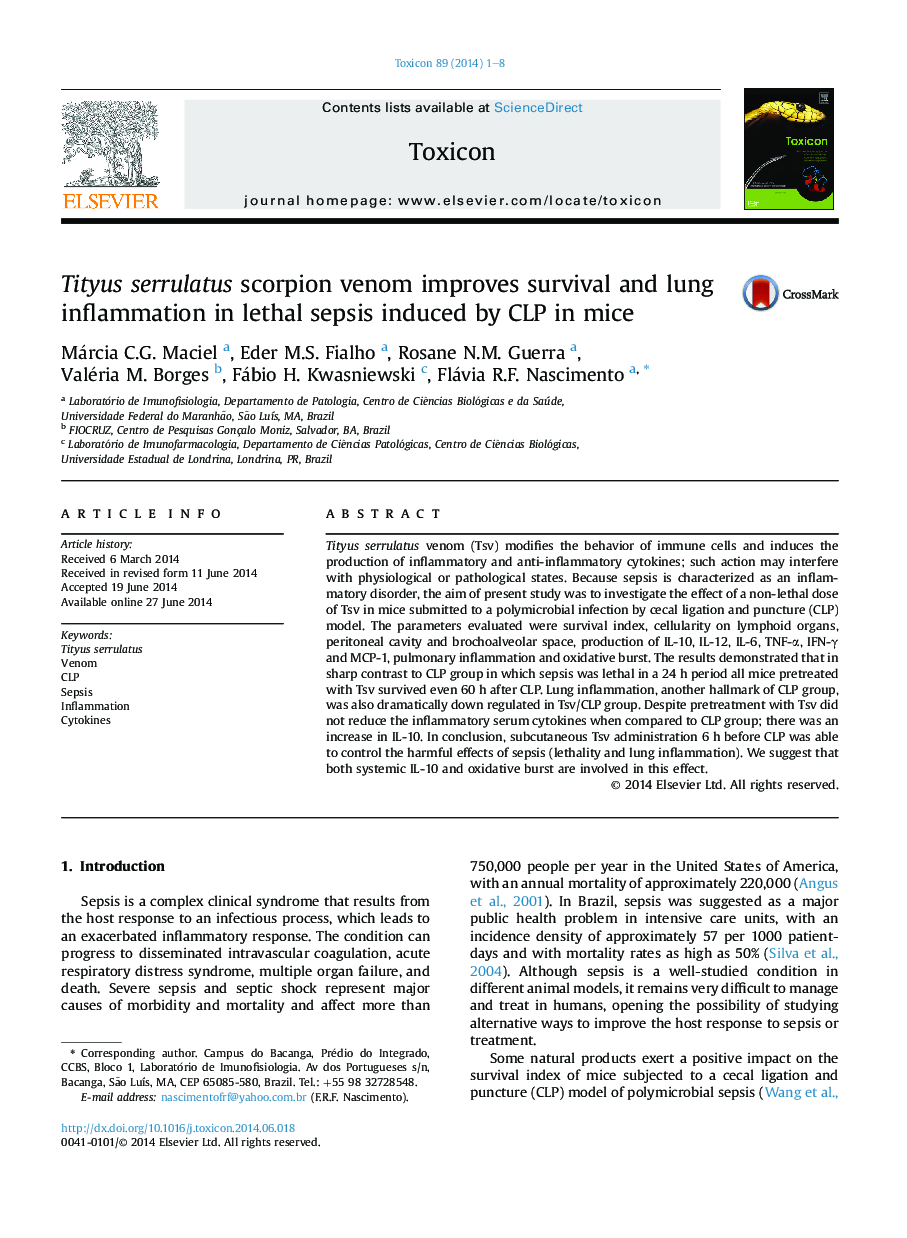| کد مقاله | کد نشریه | سال انتشار | مقاله انگلیسی | نسخه تمام متن |
|---|---|---|---|---|
| 2064638 | 1544146 | 2014 | 8 صفحه PDF | دانلود رایگان |

• The treatment with Tsv maintained 100% of septic mice alive.
• The treatment with Tsv reduced the pulmonary inflammation in septic mice.
• The Tsv induced an increase of regulatory IL-10 cytokine.
• The Tsv decreased the neutrophil number in peritoneum and blood in septic mice.
• The Tsv increased the hydrogen peroxide release in septic mice.
Tityus serrulatus venom (Tsv) modifies the behavior of immune cells and induces the production of inflammatory and anti-inflammatory cytokines; such action may interfere with physiological or pathological states. Because sepsis is characterized as an inflammatory disorder, the aim of present study was to investigate the effect of a non-lethal dose of Tsv in mice submitted to a polymicrobial infection by cecal ligation and puncture (CLP) model. The parameters evaluated were survival index, cellularity on lymphoid organs, peritoneal cavity and brochoalveolar space, production of IL-10, IL-12, IL-6, TNF-α, IFN-γ and MCP-1, pulmonary inflammation and oxidative burst. The results demonstrated that in sharp contrast to CLP group in which sepsis was lethal in a 24 h period all mice pretreated with Tsv survived even 60 h after CLP. Lung inflammation, another hallmark of CLP group, was also dramatically down regulated in Tsv/CLP group. Despite pretreatment with Tsv did not reduce the inflammatory serum cytokines when compared to CLP group; there was an increase in IL-10. In conclusion, subcutaneous Tsv administration 6 h before CLP was able to control the harmful effects of sepsis (lethality and lung inflammation). We suggest that both systemic IL-10 and oxidative burst are involved in this effect.
Journal: Toxicon - Volume 89, October 2014, Pages 1–8